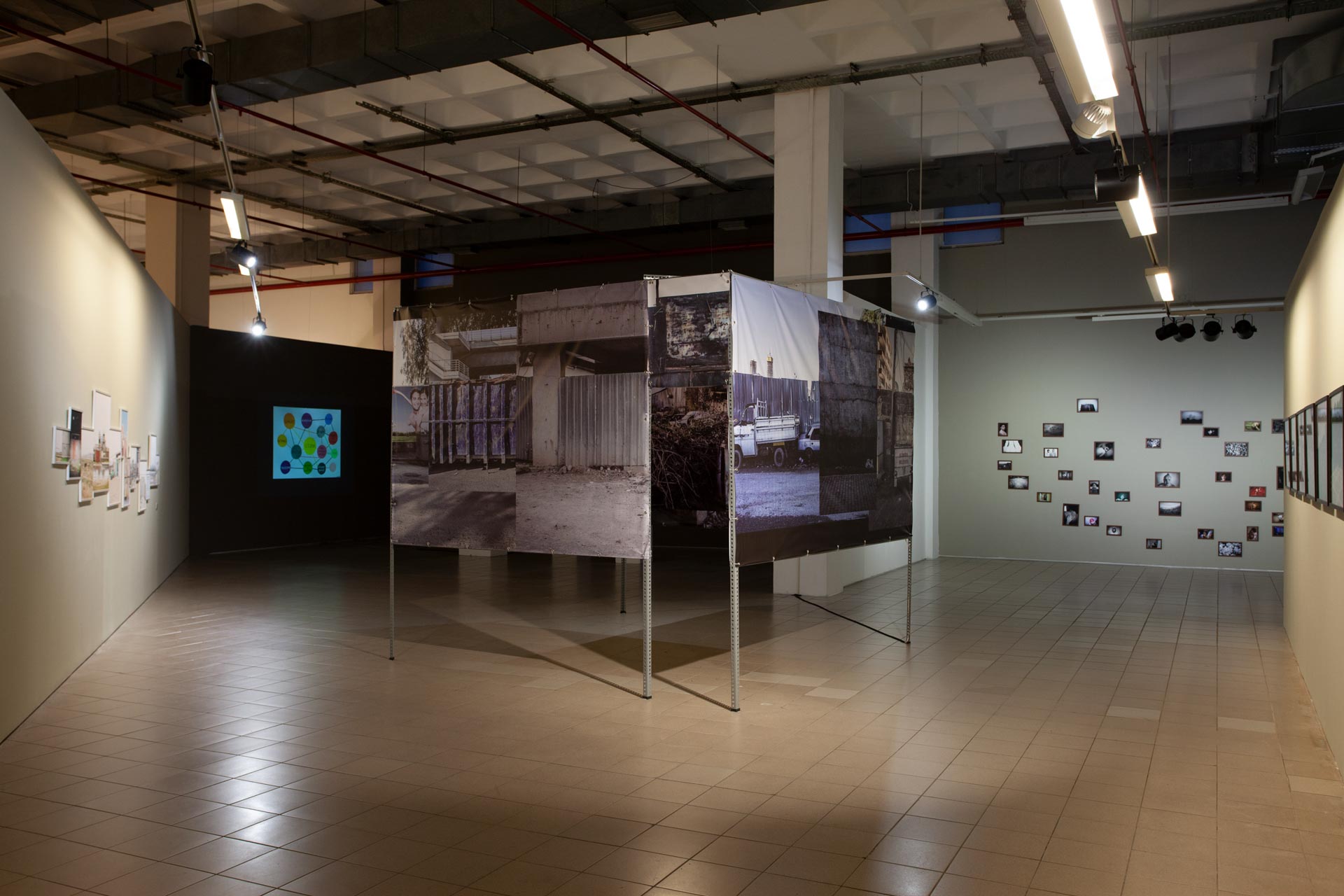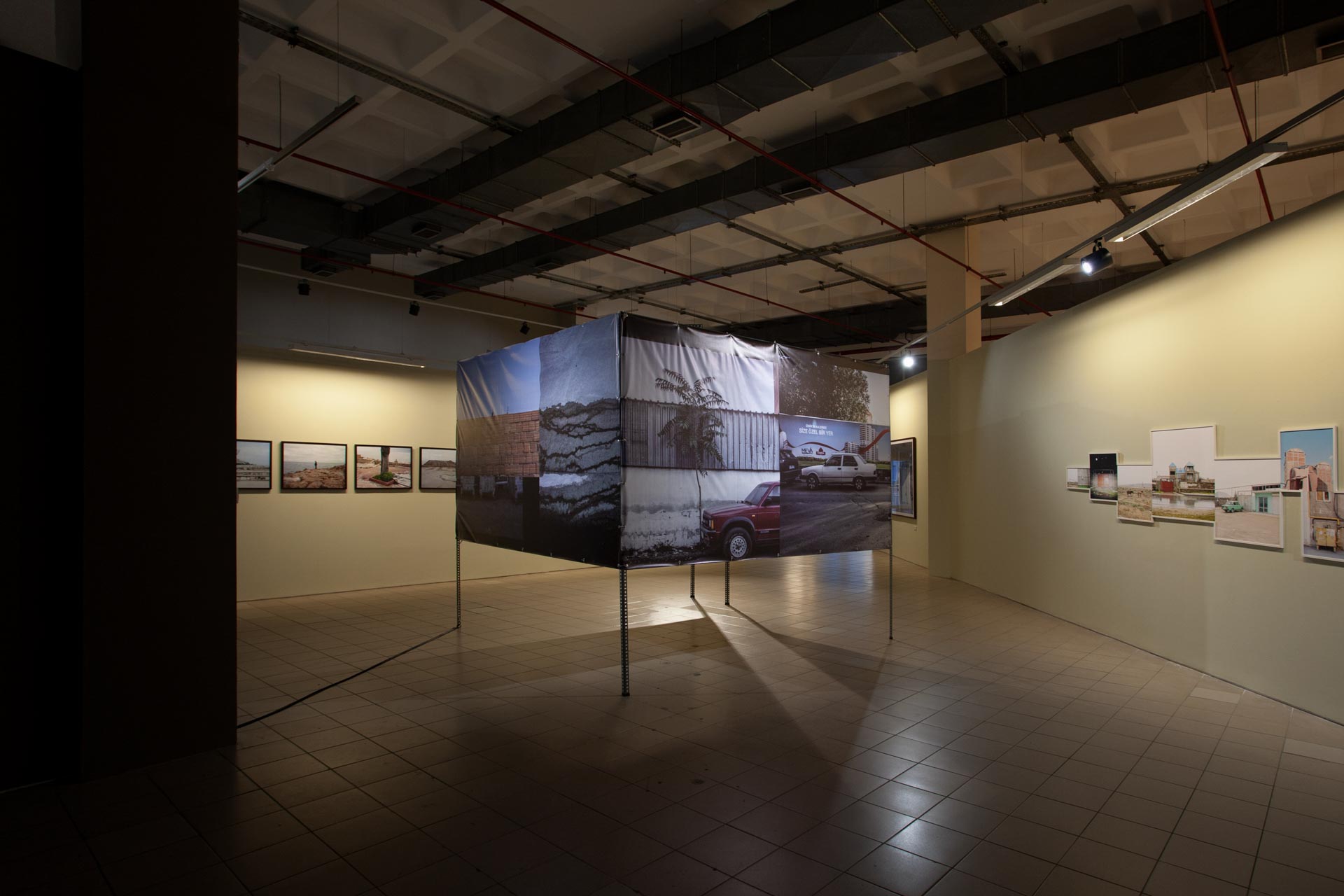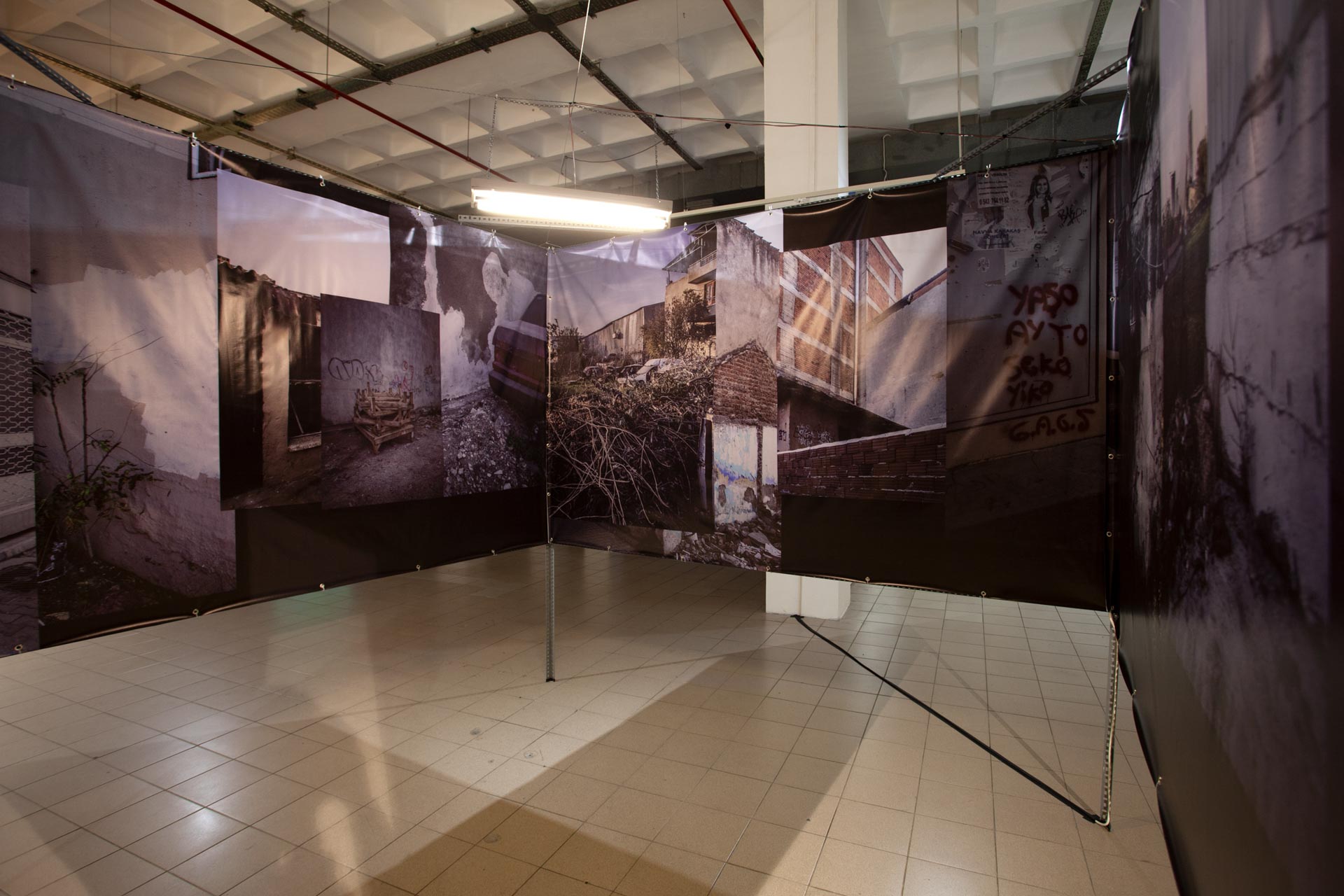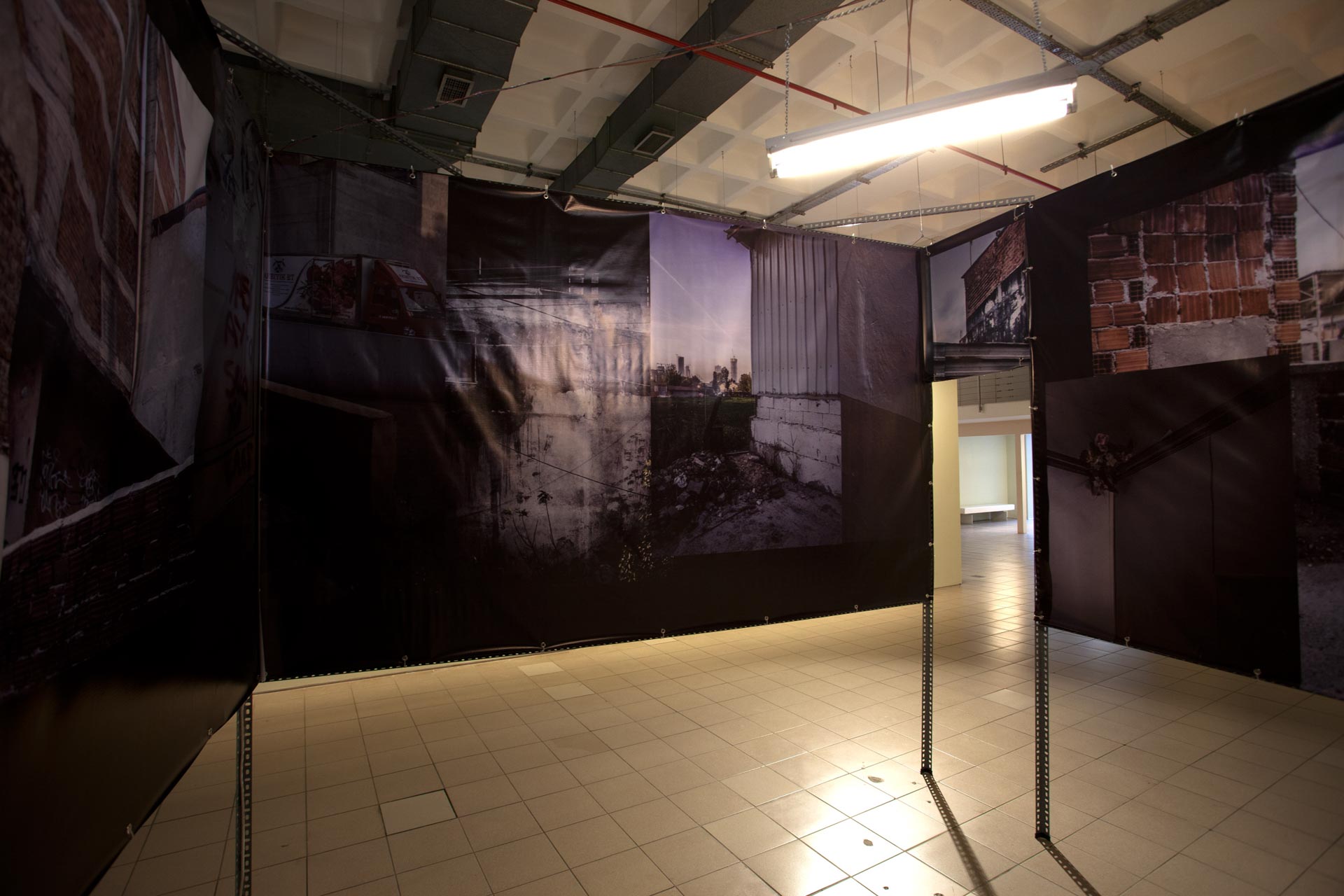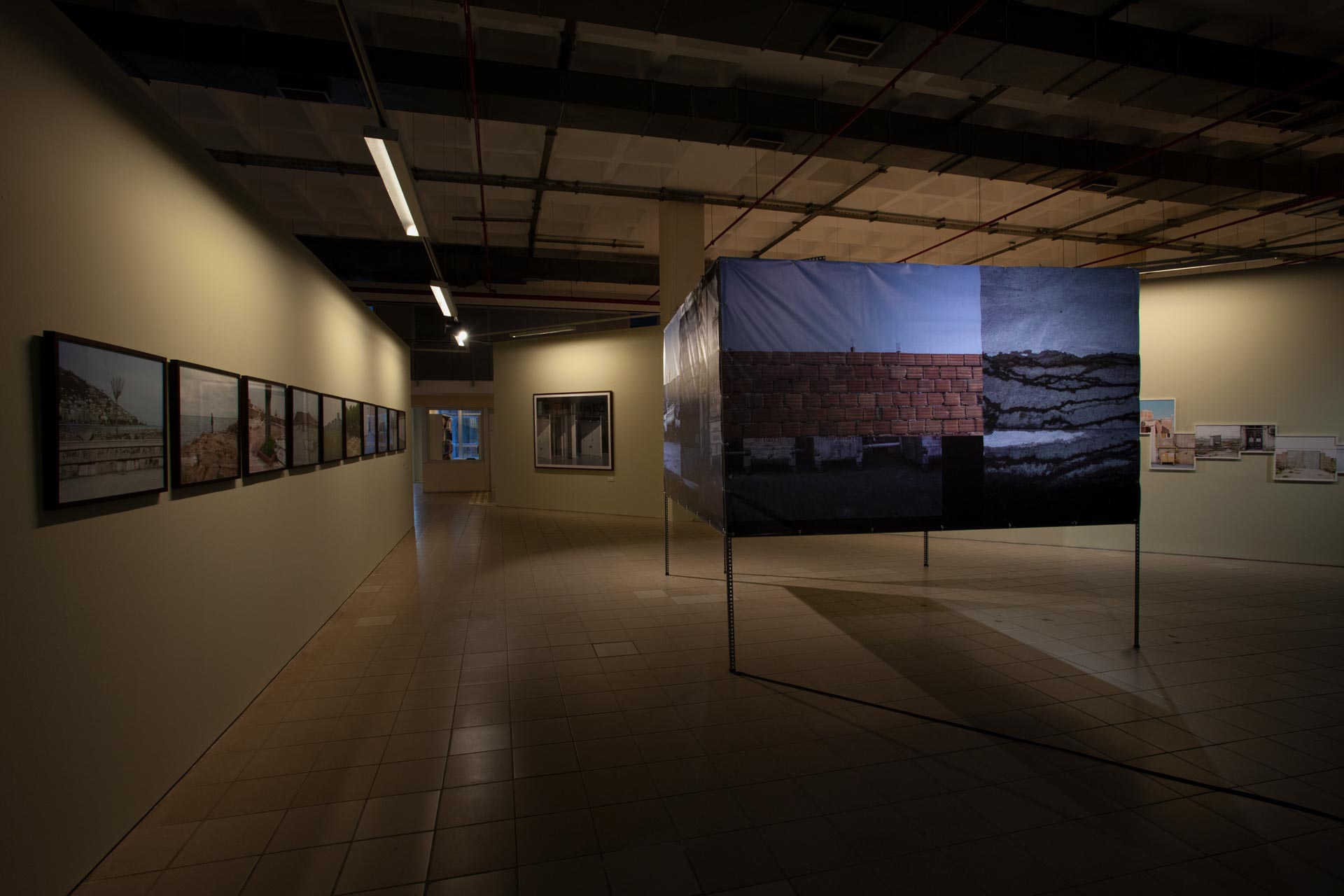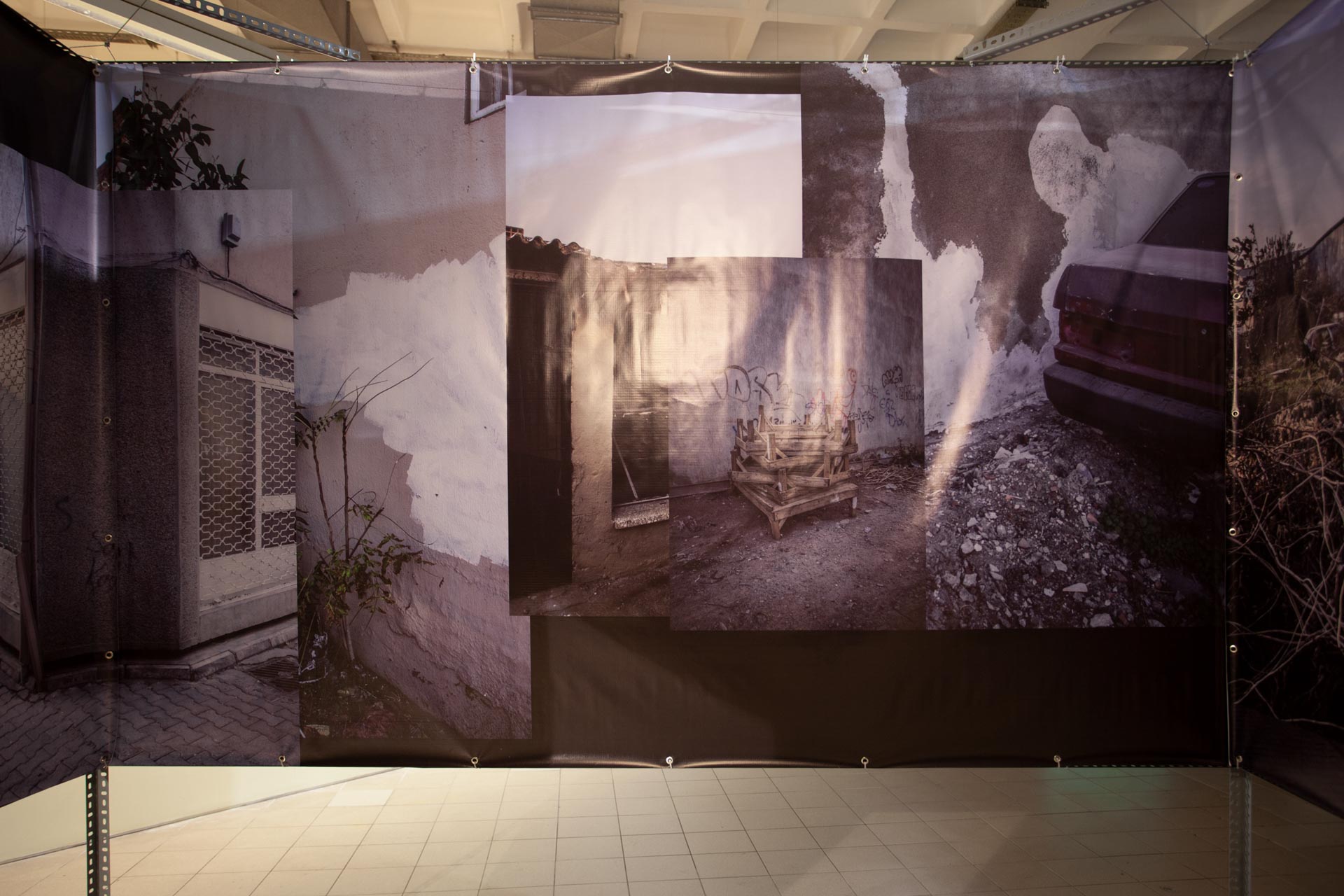Çamdibi Institute for Standardization
Installation: Metal Construction, Vinyl Print, Fluorescent Light
270×300×300CM
2018
The Çamdibi Institute for Standardization is an installation that interrogates the accelerated urban transformation reshaping non-Western cities over the past two decades, and the spatial and psychological disorientation it generates. Situated within this debate, the project inserts Çamdibi—a neighborhood undergoing rapid transformation—as a laboratory to test the tensions between dystopian reality and utopian ideals. Since 2014, the site has been documented in a growing network of photographs, texts, and experiential observations, which reach their culmination in The Çamdibi Project Book (2015), at the same time archive and critique of urban flux.
The installation draws conceptual resonance from Mike Davis’s Planet of Slums, which envisions future cities as sprawling mosaics of provisional materials—rough brick, straw, recycled plastic, and scrap—rather than the glass-and-steel utopias imagined by modernist planners. This dichotomy frames Çamdibi’s liminal state: a space suspended between the aspirational frameworks of urban “progress” and the fragmented, improvisational realities of its inhabitants. The piece asks whether such neighborhoods, caught in the crosscurrents of development, are a paradoxical mixture of utopian promise and dystopian precarity.
Materiality anchors the installation's critique. Spanning nine square meters, the building uses chain-link fencing—materials that are synonymous with informal urbanism and temporary construction—to reconstruct a fractured skyline. These materials, conventionally associated with demarcation and exclusion, are remade into a labyrinthine form that warps perspective. The rugged edges and permeable peripheries of the outer rim bring to mind the ad-hoc topographies of rapidly evolving settlements, where improvisation and make-do dominate. Here, in this environment, a series of askew lines of sight and receding planes destabilizes the subject's spatial experience, one that echoes the disjuncture between rational city planning and the messy materiality of lived-over spaces.
The installation's spatial dynamics amplify this tension as well. Seen statically, the building gives an impression of depth, with elements receding or distorting. This unattainable void is a reference to the unattainable ideal of utopian urbanism—a mirage that recedes even as communities are rearranged in its name. The experience reflects the psychological oscillations of existing in a neighborhood like Çamdibi, where the ground beneath one's feet seems to change between demolition and reconstruction.
By focusing on materials that signal impermanence—weathered plastics, rusted metal, shattered barriers—the work emphasizes the provisionality of urban "standardization" in non-Western worlds. These choices reference the paradox of development: efforts to build futuristic cities are rooted in disposable, ephemeral resources, leaving communities in a state of perpetual becoming. The tension of blockage and revelation within the installation—walls that cover and frame, barriers that contain but invite inspection—is a metaphor for the fractured visibility of city change, in which macro policies meet the micro reality of resistance and accommodation.
Lastly, the Çamdibi Institute for Standardization is a spatial metaphor of the tension between imaginations of the city and material realities. It charts how shifting neighborhoods become sites of disputed histories, where the materiality of concrete and junk speaks as much as the ideologies that frame them. In its palimpsest materiality and perceptually disorienting perspectival play, the installation invites examination of the human and architectural costs of progress, positioning Çamdibi less as an exception and more as a microcosm of urban futures worldwide.
